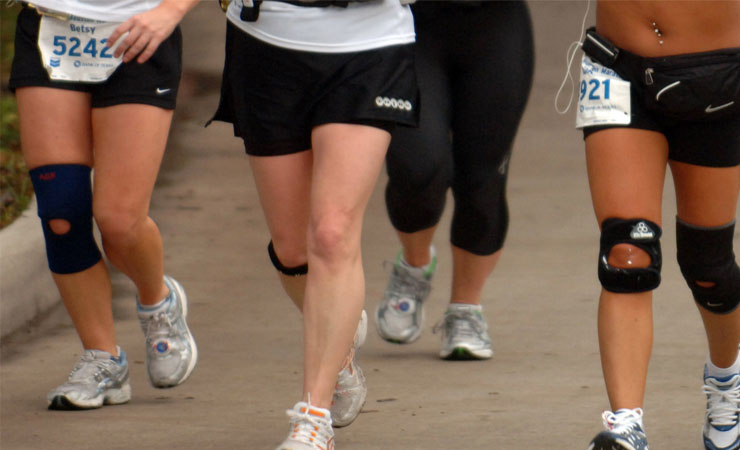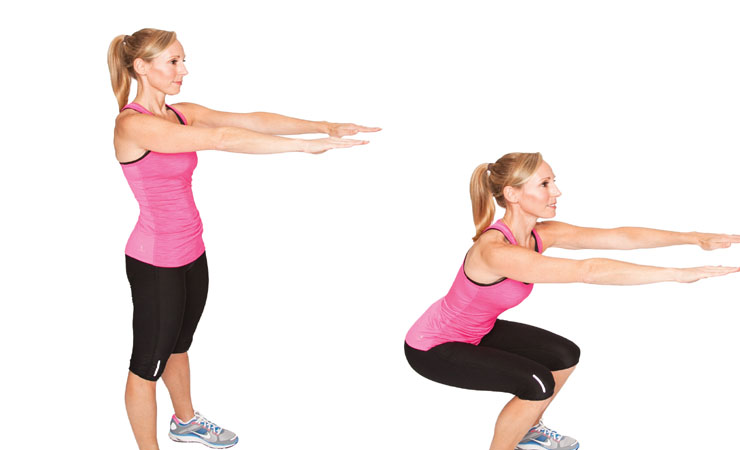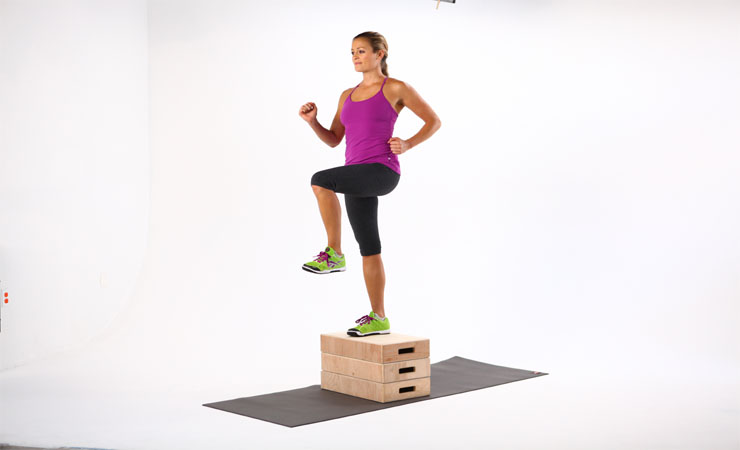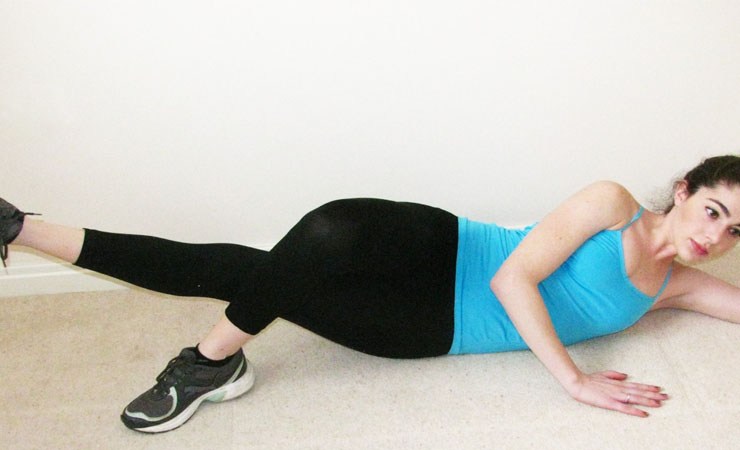Have you recently had a fracture or have recently sprained your knee and the condition seems to be so bad that you cannot even take a step without support? Yep, that is one bad knee you have there. Bad knee occurs when either you have damaged the ligaments that support the knee joint or you must have fallen with an angle that twisted your leg.
Knee joint is one of the strongest joint of the body, supported by a total of 4 ligaments and accessory support is provided by the tendon of a muscle. The knee joint is made up of 3 bones namely tibia, fibula and the patella. Keeping these bones in an assembly helps stabilize the joint to prevent dislocation of the knee in various directions.

The knee can be dislocated by having a direct blow to the knee or by accidently knocking down something with the knee. This moves the knee outside the range of movements like in running in an awkward position, by falling down while playing a sport or by sudden movement while getting up from the bed.
You will present with the following symptoms if you have torn a ligament or have sprained a knee:
- A popping sound from the knee at the time of injury confirms that you have completely torn a ligament.
- If the knee is swollen after an injury, the chances are that you have fractured the patella or might have torn the ligament in such a way that blood has accumulated in the cavity. Minor tears have less swelling around the knee whereas completely torn ligaments have a lot of pain and swelling.
- Pain and tenderness vary from nature of injury to the intensity of the injury. Small injury will have less pain and will be less tender on touch.
- Movements of the knee become painful. Small injuries to the knee will allow movement to certain angles while movements will be difficult in case of broken patellar bone or ligament.
- Standing up will be difficult as there will be a feeling that the knee will give away. Minor tear or sprain will not cause this but a major sprain or injury to the knee definitely would.
- Bruising may appear if external trauma has occurred. Grazes and scratches should be adequately cleaned with pyodine and an injection of tetanus tetanus toxide to avoid further complications.

When you notice these symptoms it is advisable to rush to the doctor immediately. They might go for an X-ray, MRI or CT Scan to see the extent of damage if it is not clear by the X-ray. If there is accumulation of blood in the joint cavity, the doctor might aspirate it using a needle.
Once you have a bad knee, it is better to rest for a few days and get back to your daily routine once you feel better. If you gym or do aerobics at home, you must be wondering which exercises to choose that are good for you or which ones to avoid stopping the aggravating symptoms.
A TIP for you if it is your first day after recovering from a bad knee or is recovering from such a condition:
Do not bend your knees to the point where they stick past the toes. Doing this puts in a lot of pressure under the knee cap. Avoid this not only while you are exercising but also when you are warming up, stretching during aerobics or while doing yoga.
Here are a few exercises that are good for a bad knee:
6. Partial Squats

Partial squats are considered best for bad knee. This exercise is also known as Half Squat. It primarily involves Quadriceps. The other muscles that aid in this exercise to achieve such a posture are the Calves, Gluts, Hamstrings, Hip Adductors and Spinal Erectors. If you are at the gym you can choose Barbell, Power racks and to provide some additional support to the knee, use Knee belts and some weight lifting straps.
Here’s how you do partial squats:
- Stand straight, retract the shoulders towards your back and tighten the upper back and draw the chest forward.
- Place the hands in front and align the toes in angle with the shoulder blade. Squats are done when shoulder to toe ratio is equal.
- Have a slight arch at the back and extend the thoracic spine.
- Now bend downwards flexing the knees and hips to form a squat at an angle of 45 degrees. Remember the thighs should be parallel but above the floor.
- Do not pause once you reach the point where the hips are slightly parallel to the ground.
- Wait for about 5 seconds and gradually reach your original position.
- Repeat these for the desired number of reps you have aimed for.
5. Step Ups

Step up is another effective exercise for a bad knee. Not only that, it helps uplift the flat, droopy butt but this exercise involves the actions of the lunge with stepping forward movements like climbing the stairs to really target the knee, but and the upper hamstrings. The things you require for doing this is a short bench, a solid coffee table or if you are outside at a park, you can do this while climbing on top of a sidewalk and then reaching back to the original position.
There are three different variations according to your condition. You can choose between the three.
Beginner:
If you are a beginner or have sprained your knee very badly, this is mild and will be good to take a start. You can gradually add up the number and types of exercise to increase load on the knee according to your condition.
Here is how you can do step ups at the beginner level:
- Place a bench or a coffee table in front of you keeping in mind that the knee needs to bend only at 90 degrees.
- Place the right foot on the bench pressing through the right heel and bringing the left knee in place with the right knee.
- Stand for about 2 seconds and then return to the original position but this time keeping the left foot on the table and the right foot on the ground.
- Complete a set of about 15 step ups using the right foot at first and then the left foot. To see some strength build up, do three sets of this exercise daily.
Intermediate:
For intermediate level of step ups it is recommended to have a shorter weight bench or a short coffee table to feel some real efforts put in.
Here is how intermediate step ups are done:
- Step on the bench with the right foot.
- Straighten the knee to stand on the bench as you lift the left leg till the hips and leg are both at an angle of 90 degrees.
- Now keep the right foot still in its place, bending the right knee as the left foot is lowered back to the floor to touch the ground with the toes shifting the weight to the left foot.
- Press the right heel as the knee is straightened to stand on the bench. This completes one intermediate level sit up.
- Do 15 reps on each leg completing 3 sets altogether.
Advance level Sit up:
- Advance level sit up can be done by doing the beginner level sit ups but use dumbbells of 8 lbs of weight in each hand increasing the weight up to 15 lbs.
- If you have aced it, try intermediate level sit ups with the weights.
- Do three sets with 15 reps in each set. Your knee will be back to normal in no time.
“Best exercises to do for better recovery of bad knee. 5 Exercises to do and 4 to avoid for a bad knee. How to convert a bad painful knee into a good knee?”
4. Side lying Leg Lifts

Side lying leg lifts, also known as leg raise is another exercise to strengthen the knee. Not only that, it tones the leg, thigh and the butt. This exercise primarily acts on the abductor muscles of the thigh. These muscles aid in various sports activities, daily activities and help movements easy in case of bad knee.
Here’s how Side Lying Leg Raise are done when you are unable to stand on your own weight:
- Lie down on one side on the body. Make sure the side you to choose to lie down is the opposite of the knee that pains.
- Let’s suppose the sprained knee is the left knee. Lie on the right side of the body, shifting your weight on the right leg lifting the left leg upwards as high as possible.
- Hold it in place for about 10 seconds and return the leg to its normal position.
- Complete the targeted reps while lying on one side and shift to the other leg.
- Do the same steps with the other side.
- It is ideal to complete 15 reps of 2 sets every other day till the condition of the knee improves.
TIP for you all:
Begin working on your leg without resistance and add up resistance as the condition of the knee improves. Keep in mind that the muscle should not be strained and should not be done daily to allow muscle recovery.
3. Inner Thigh Leg Lift

This exercise is another one of the best exercises to strengthen the weak knee. This action does involve lying down lazily but I promise you, it’ll be one of the toughest ones you have ever done. A plus point of doing this exercise is it tones the thigh, gluts and hamstrings and uplifts the sagging butt.
Here is how this exercise is done:
- Lie on the side opposite the bad knee. Lengthen the leg that is resting on the floor and cross over with the other (this being the leg that has the bad knee) resting it on top of the lengthened leg.
- Place a hand under your head for support.
- Keep the trunk stable and make efforts with the inner thigh rather than the back to do the exercise.
- There are going to be four movements that you will be doing to mobilize the stiff knee. They are:
- Straight-up lifts:
- Lift the bottom leg up as you expire out the air and inhale as you lower it back down on the ground. The trunk and the head should stay in their place while you do this.
Do a set of 15 reps:
Tiny Pulses:
Lift the bottom leg up as you exhale the air out of your system. Keep the leg steady in air and pulse for about 10 times. Once this is done, lower the raised leg back to its normal position.
Small Circles:
Draw out the breath as you lift the bottom leg in air. Draw small circles 10 times clockwise and then 10 circles counterclockwise. Bring back the leg back to its normal position on the ground.
Go Halfway:
Lift the bottom leg up half the way as you draw out the air from your lungs and pulse inwards as you inhale. The next time you exhale, lift the leg all the way up. Stop and inhale. As you let go of the breath this time lower your leg half way down gradually. Pause for about half a second and bring the leg back to its original position.
Do 15 reps in a set for one leg and then 15 reps for the other.
2. Hamstring Stretch
“Exercises to recover easily from a bad knee. Tips and exercises to improve bad knee and its associated symptoms. Signs and exercises for a bad knee.”

Hamstring Stretch is also an exercise that helps stabilize the knee, strengthen the ligaments and aids in quick recovery of the knee. This exercise should be done once you can do the previous four exercises easily. This exercise also not only targets your knee but acts on the whole leg. It tones the leg, provides strength to the gluts, the calf muscles all the way to the sole of the foot. Not only is it good for rapid recovery but is a good exercise for refreshing after some tiresome activities you have done throughout the day.
Hamstring stretch has various methods but my most favorite ones are listed here:
Tip over Hamstring Stretch:
- Stand upright with the feet to hip distance apart.
- Take your hands to the back, interweave your fingers.
- Keeping the legs straight, bed down at the hips; tuck the chin bringing the hands over the head.
- Relax your neck and if the stretch seems too tight, let go of the hands and place them at the back of the thigh to give support.
- Hold it for 30 seconds and then slowly stand.
Scissor Hamstring Stretch:
- Stand with one leg drawn forward and the other at the back in the normal plain. Hold it for 30 seconds.
- Do the same with the other leg and relax.
- Basic Hamstring Stretch:
- Lie down on your back and uplift your chest.
- Fix your torso on the ground as you lift a leg up.
- Take a belt and place it in between the heel and the toes and pull the leg by applying mild force.
- Hold the leg for about 10 seconds and then repeat the same steps for the other leg.
- Do not bend the knee while you do these steps.
Here are a few exercises that are to be avoided if you have a bad knee:
Full Arc Knee Extension:
Leg extensions exert force and tension on the knee especially when heavy weights are used. They increase the risk of patellar deviation when the ligaments are weak. When heavy weight is applied on the knee there are chances of damaging the knee further. These exercises should be avoided as the ligaments might tear and prevent mobility at the level of the joints.
Lunges:
Lunges and knee pain walk together throughout the phase of workout. It is caused when techniques are not followed properly during exercise. In case of bad knee, lunges should definitely be off the list as they elevate knee pain further.
The knee pain occurs because these exercises require individuals to bend their legs using a great amount of pressure that causes strain on the knees. Lunges are done to target the gluts and thighs but if not done properly can cause ligaments to tear. The popping sound is accompanied by pain, it is confirmed that your knee is sprained.
One must avoid assisted lunges, lunges of smaller ranges and elevated foot lunges. It is thus advisable to avoid doing such exercises completely till the joint recovers.
Deep Squats:
Squats are done widely by both men and women to build up some gluts and strengthen the legs. People performing these exercises have a lot of chances to damage their knees if this exercise is not done properly.
People having bad knees should avoid this because:
- These exercises exert full pressure on the knees, hip joint and the thighs.
- These exercises cause weakening of the ligaments and dislocation of knee towards the back is really common.
1. Hurdle Stretches

Hurdle stretches are the exercises used by athletes, physical education teachers and by gym coaches to warm up before doing some heavy exercises. However with the number of reported injuries because of this, it is now being avoided.
Hurdle stretches are done in a seated position, extending the knee up to 45 degrees from the angle at the hips. Reach out till you touch the toes. If ankles are reached, grab them and relax. Take deep breath and then repeat the same steps for the other leg.
The risk caused by hyper stretched knee by hurdle stretch, forces the sideways motion of the knee joint. This pulls the ligaments and puts pressure on the joint. So if you want rapid recovery, avoid doing this exercise.
The exercises recommended and the exercises contraindicated are mentioned above. If you have a bad knee not only medications will help but other treatments might also help easing the recovery. There are modifications that you can make in your workout plan if you have suffered from such a condition before. One should remain motivated and Never Give Up if such obstacles are faced in living a healthy life. A patient’s reviews after such a condition were
“I’m pleased to say my knee feels a lot better. It is not back to normal, and I don’t know if it will ever be, but I am learning to deal with it instead of expecting it to be like it was before.”
Some Tips For Bad Knee
- Protect the knee from further injury by choosing light exercises and following right techniques.
- Rest the injured knee for 48 to 72 hours after the injury.
- Start mild exercises as soon as possible to mobilize the joint.
- Ice packs should be applied as soon as possible for about 10 to 30 minutes.
- Compressing the bandage on the injured knee will limit the spread the swelling.
- Sea salt saturated water also helps recovery from such strains.
- Alcohols should be completely avoided to ensure better recovery.
- Massage should be avoided as it may result in further bleeding.







